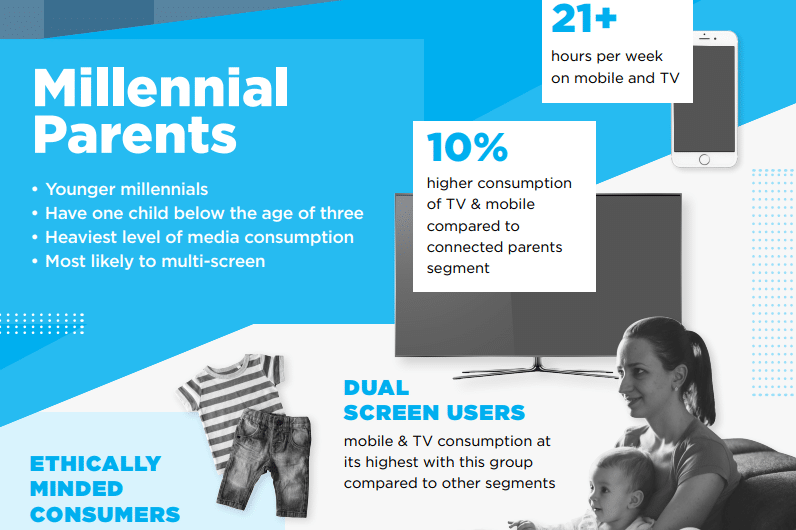Anand Siddiqui, Senior Director Audience and Product for Xaxis EMEA shares his thoughts on this as well as Xaxis' recent parenting infographic which you can download here.
The ad industry has been getting parents all wrong.
Ok, ad industry, let's talk about how we market to parents. A lot of segmentation we see is based on old observed data, which is both out of date and doesn't consider device or media usage, meaning its’ simply not that actionable. More importantly for brands, it fundamentally lacks relevancy.
We thought “we can do better than this”. So, we did. Xaxis surveyed 2,400 parents in eight countries. We asked about their attitudes, buying preferences, device usage, and their media habits. Analysing the data, we found that parents today can usefully be organised into four segments.
Millennial parents
Millennials are young parents. Their children are three years old or younger. They’re still in the nesting phase, so product quality is paramount. Nothing is too good for their precious first-borns.
Parents in this group use two screens a lot —watching TV with their kids while using their phones to browse content they like. They also use mobile devices with their kids more than other groups do, so media should be built for co-consumption as dual screening is a shared activity in their case.
Millennial parents spend 21 hours or more in front of screens every week. They shop online more than any other group. And they engage and respond well to video content.
Connected parents
Older than millennials, connected parents have, on average two or more kids.
Parents in this segment listen to more radio than any of the others. They use their phones to check product reviews and do price comparisons instore. And they’re more likely than parents in other segments to watch the same content as their kids.
Our media targeting tip for connected parents is to prioritise audio streaming, it’s their engaged medium of choice.
Multi-tasking parents
In their mid-30s or older, multi-tasking parents have two or three kids. They’re very busy, so the big challenge is to get their attention.
Unlike millennials, multi-taskers are driven by convenience more than quality. Of all the segments, they’re most likely to share a device with their children.
Our media tip: personalisation is key, but remember the co-consumption aspect.
Independent parents
Independent parents are in their 40s and have teenage kids. They enjoy spending free time outdoors and planning holidays without their kids.
This group is less likely to feel dependent on technology. They don’t often use their phones while shopping. But their teens are highly connected, with 88% owning their own device.
Our media tip: independent parents do love to play social games and watch videos on their mobile devices. Target them in these moments, they are highly engaged and therefore responsive.
How to get this research
As well as identifying important differences in behaviour and common life experiences, the research contains data on national differences in parents' behaviour, preferences and device usage.
Our insights are available to download now.
Email xaxemea.marketing@xaxis.com or call the Xaxis team on 020 7158 5000 if you would like to book a campaign.





